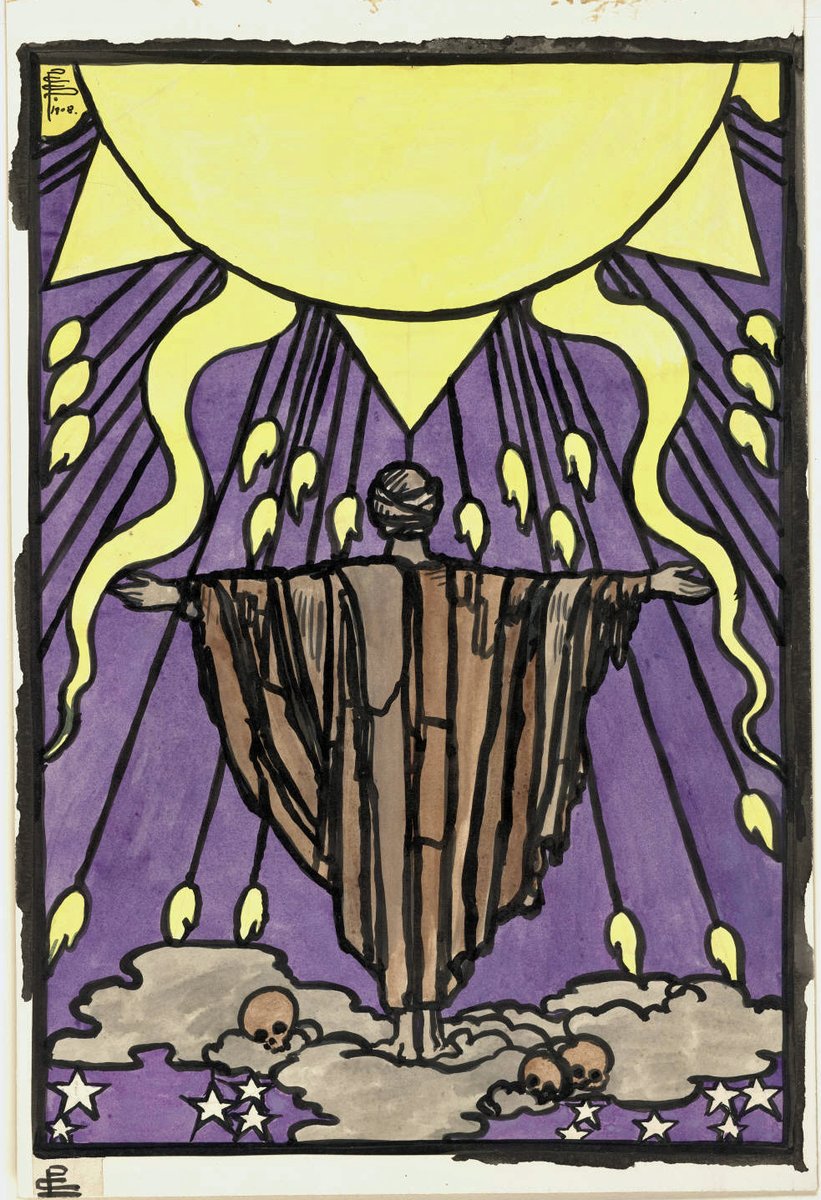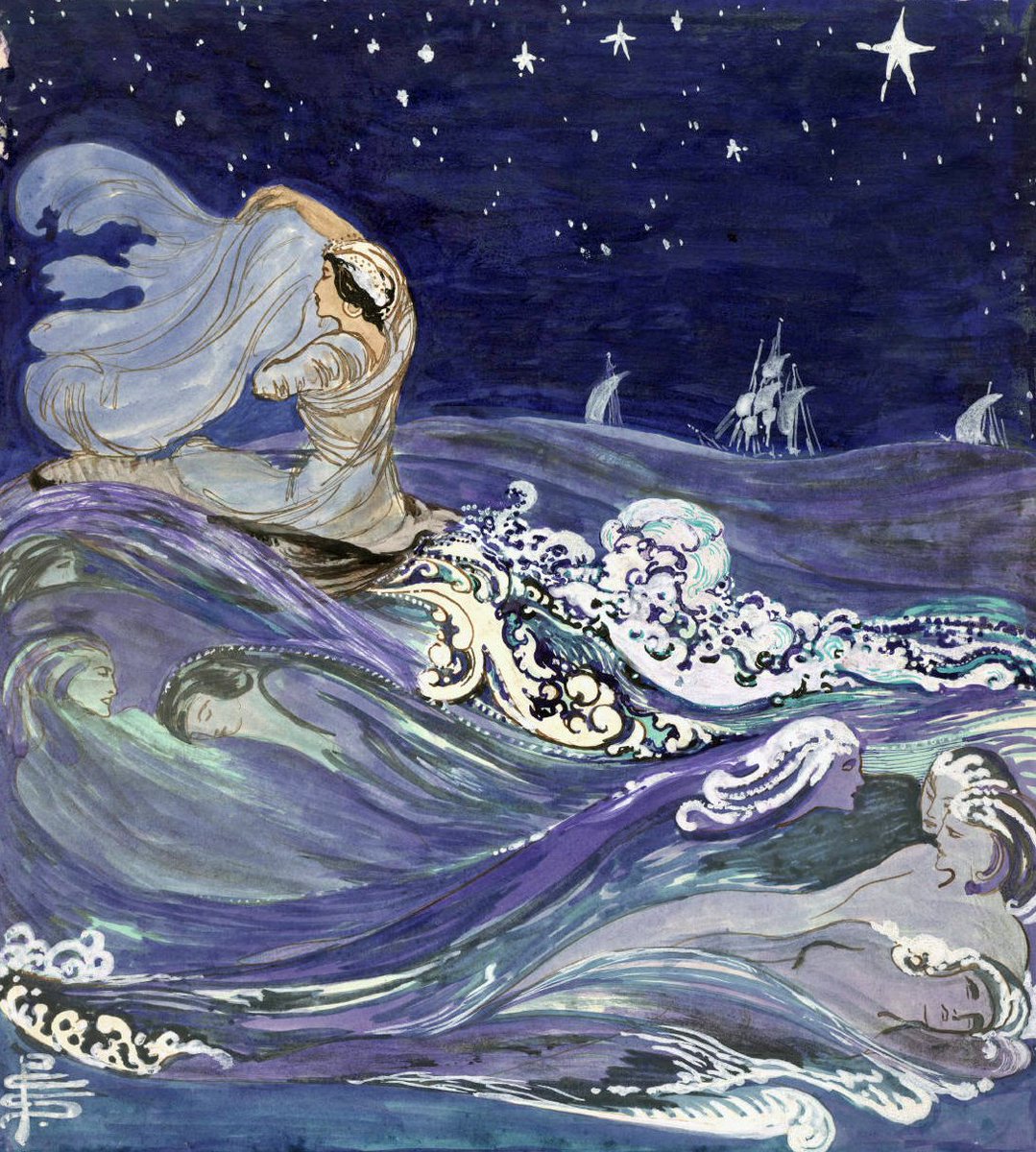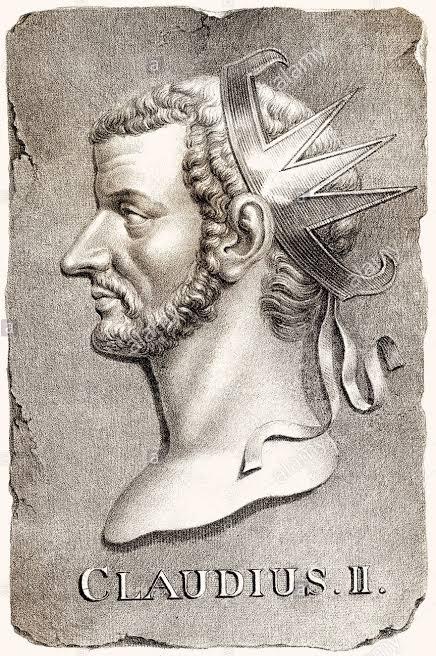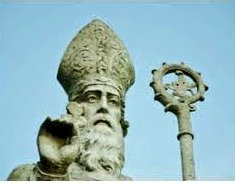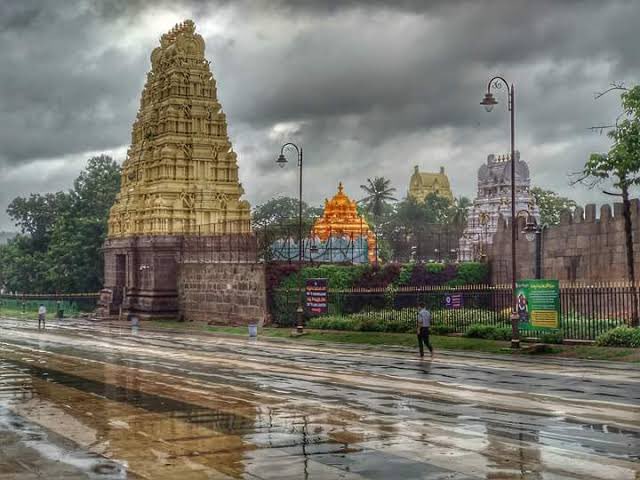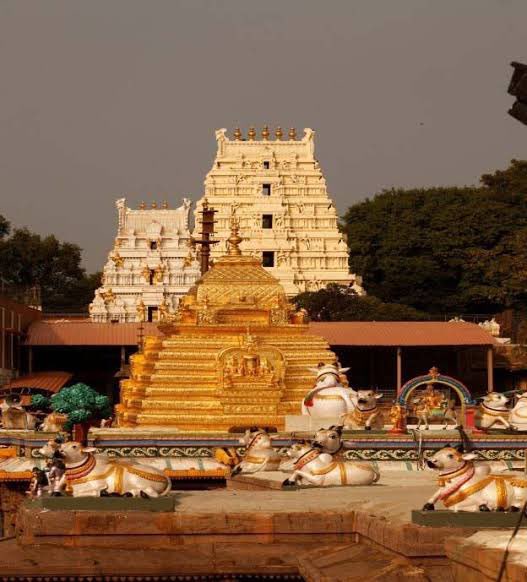On this day in 1878, Pamela Colman Smith was born. Although you may not have heard this artist's name, you will have almost definitely seen her work: among many other achievements, Smith illustrated the famous Waite-Smith tarot deck.
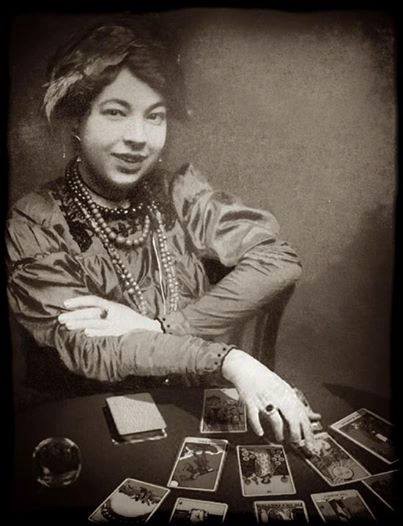
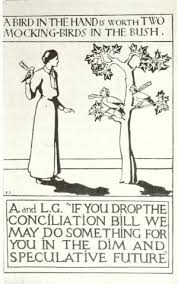
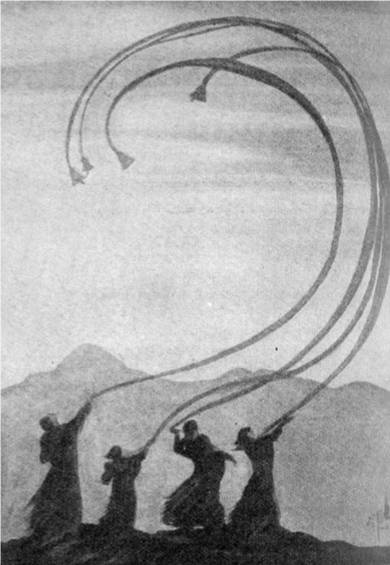
Sonata No. 11 - Beethoven (1907, watercolour on paper board)
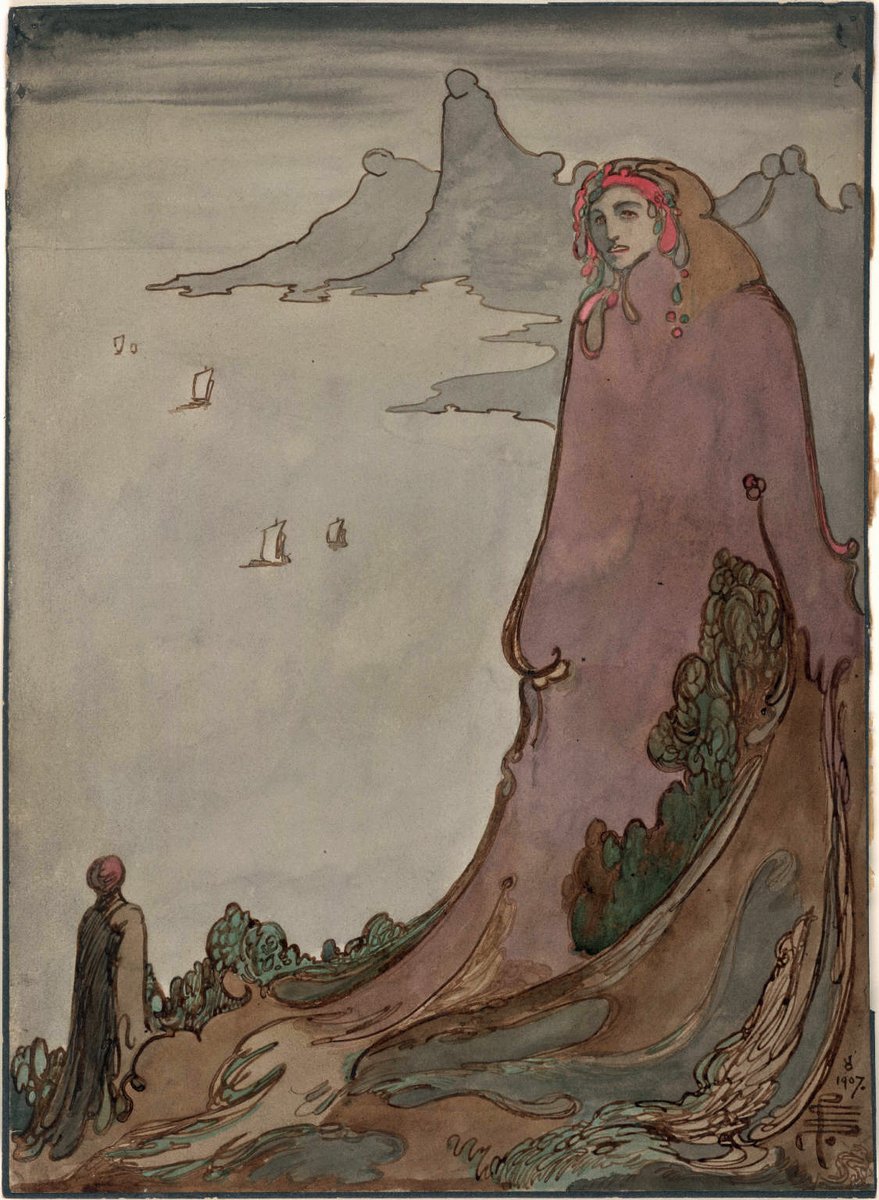
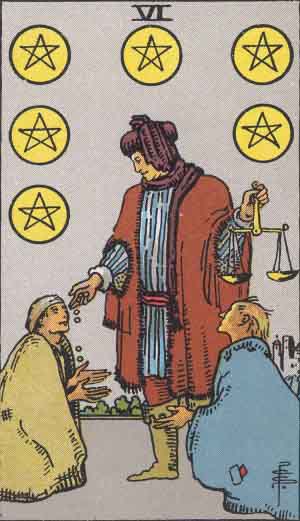
More from History
TIL:
- first Western detective stories translated & published in Japan in *1863*--that's pre-Meiji, even!
- first Chinese-written detective stories featuring Western-style detectives starred women as both detectives and criminals were published in 1907--author Lü Simian (!).
Quote: “This case is so complicated that even Sherlock Holmes would feel helpless if it fell into his hands. [Now] it is solved by a woman who returned from abroad for a brief
visit to her hometown. Who is to say that the wisdom of Chinese cannot compete with the Westerners?”
The lead female detective in these stories, Chu Yi, is a fan of Doyle's Holmes stories and asks herself "What would Sherlock Holmes do?" while crime-solving, but succeeds through her use of martial arts and more "Chinese" attributes--China, not the West, solves the crimes.
Author Lü Simian, btw, is this guy: https://t.co/swPvAxr87J . One of the "four greatest modern Chinese historians," also wrote a landmark work of literary theory, and helped cohere Chinese detective fiction with his stories. Bit of a badass.
Holmes was the dominant influence on Chinese detective fiction of the late-Qing & early Republic years, and the biggest star of Chinese detective fiction of those years, Cheng Xiaoqing's Huo Sang, was a spin on Holmes.
- first Western detective stories translated & published in Japan in *1863*--that's pre-Meiji, even!
- first Chinese-written detective stories featuring Western-style detectives starred women as both detectives and criminals were published in 1907--author Lü Simian (!).
Quote: “This case is so complicated that even Sherlock Holmes would feel helpless if it fell into his hands. [Now] it is solved by a woman who returned from abroad for a brief
visit to her hometown. Who is to say that the wisdom of Chinese cannot compete with the Westerners?”
The lead female detective in these stories, Chu Yi, is a fan of Doyle's Holmes stories and asks herself "What would Sherlock Holmes do?" while crime-solving, but succeeds through her use of martial arts and more "Chinese" attributes--China, not the West, solves the crimes.
Author Lü Simian, btw, is this guy: https://t.co/swPvAxr87J . One of the "four greatest modern Chinese historians," also wrote a landmark work of literary theory, and helped cohere Chinese detective fiction with his stories. Bit of a badass.
Holmes was the dominant influence on Chinese detective fiction of the late-Qing & early Republic years, and the biggest star of Chinese detective fiction of those years, Cheng Xiaoqing's Huo Sang, was a spin on Holmes.
You May Also Like
1/OK, data mystery time.
This New York Times feature shows China with a Gini Index of less than 30, which would make it more equal than Canada, France, or the Netherlands. https://t.co/g3Sv6DZTDE
That's weird. Income inequality in China is legendary.
Let's check this number.
2/The New York Times cites the World Bank's recent report, "Fair Progress? Economic Mobility across Generations Around the World".
The report is available here:
3/The World Bank report has a graph in which it appears to show the same value for China's Gini - under 0.3.
The graph cites the World Development Indicators as its source for the income inequality data.

4/The World Development Indicators are available at the World Bank's website.
Here's the Gini index: https://t.co/MvylQzpX6A
It looks as if the latest estimate for China's Gini is 42.2.
That estimate is from 2012.
5/A Gini of 42.2 would put China in the same neighborhood as the U.S., whose Gini was estimated at 41 in 2013.
I can't find the <30 number anywhere. The only other estimate in the tables for China is from 2008, when it was estimated at 42.8.
This New York Times feature shows China with a Gini Index of less than 30, which would make it more equal than Canada, France, or the Netherlands. https://t.co/g3Sv6DZTDE
That's weird. Income inequality in China is legendary.
Let's check this number.
2/The New York Times cites the World Bank's recent report, "Fair Progress? Economic Mobility across Generations Around the World".
The report is available here:
3/The World Bank report has a graph in which it appears to show the same value for China's Gini - under 0.3.
The graph cites the World Development Indicators as its source for the income inequality data.

4/The World Development Indicators are available at the World Bank's website.
Here's the Gini index: https://t.co/MvylQzpX6A
It looks as if the latest estimate for China's Gini is 42.2.
That estimate is from 2012.
5/A Gini of 42.2 would put China in the same neighborhood as the U.S., whose Gini was estimated at 41 in 2013.
I can't find the <30 number anywhere. The only other estimate in the tables for China is from 2008, when it was estimated at 42.8.

